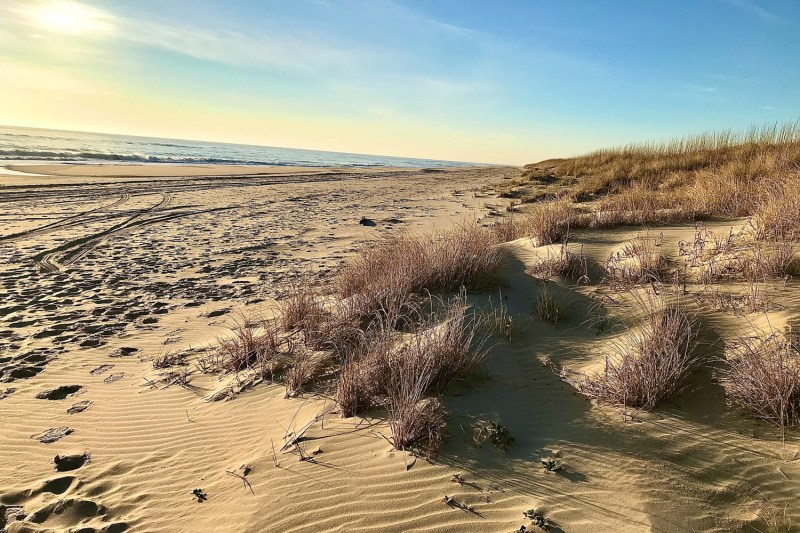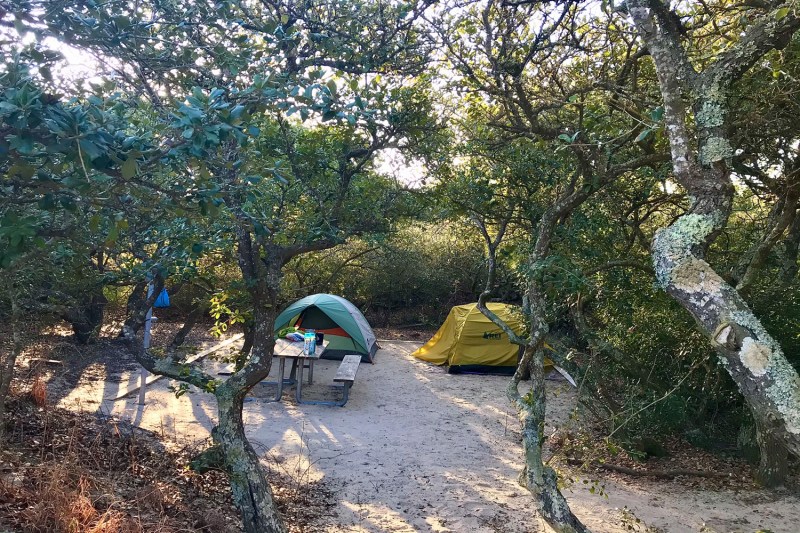
Discovering a private stretch of beach is like stumbling on a slice of paradise. And, one of the best ways to seek out your own swath of shoreline is with a beach camping trip. Offering a chance to spy migrating marine creatures, catch epic sunrises, and fall asleep to the sound of the tide, a beach campout makes for an idyllic getaway any time of year. In the south, ocean temperatures are still warm enough for swimming well into the fall, and beaches situated along the Atlantic Flyway offer the chance to admire masses of migrating waterfowl during the fall and winter.
While on the other side of the country, beach campers have the opportunity to spot migrating gray whales bound for the warm waters around Baja during the fall and winter. The best places to visit throughout the U.S. are a number of state and national parks, national seashores, and wilderness areas that offer opportunities for beach campers to snag a spectacular spot in the sand. Keep reading to find out where the best beaches for camping are located.
Olympic National Park
Washington state

Covering the northern portion of the Olympic Peninsula, Olympic National Park preserves nearly a million acres of snow-capped peaks, old-growth forests, and craggy stretches of coastline, bounded by the Puget Sound and the Strait of Juan de Fuca. Nearly the entire park — almost 95% — is preserved as wilderness, and roamed by Roosevelt elk, mountain lions, and black bears. The protected area also harbors 65 miles of coastline, including a handful of spots for beach campers.
In the southwest portion of the Olympic Peninsula, the Kalaloch area provides a microcosm of the national park’s rich biodiversity — and spots for beach campers at the Kalaloch Campground, open year-round. The waters and islands offshore are protected by three national wildlife refuges and the Olympic Coast National Marine Sanctuary, offering the chance to spy sea otters, harbor seals, and gray whales. And, less than four miles north of the campground, Beach 4 features some of the national park’s most spectacular tide pools.
False Cape State Park
Virginia

Just 20 miles south of the boardwalk-bedecked shores of Virginia Beach, False Cape State Park is one of the most remote recreation areas in Virginia. Spread over a slender barrier island nestled between Back Bay and the Atlantic Ocean, the state park is accessible only on foot — and to reach the protected area, visitors must hike, bike, or paddle through the 9,108-acre Back Bay National Wildlife Refuge, a hotspot for avifauna situated along the Atlantic Flyway frequented by osprey, great egrets, and piping plovers.
For backpackers, a 15-mile trail network threading wind-shaped sand dunes, scruffy maritime forests, and biodiversity-loaded wetlands provides access to the state park’s four backcountry campgrounds — with offerings both on Back Bay and the Atlantic Ocean. Nestled behind the coastline’s shifting sand dunes, the seaside campsites are close enough to the water to allow visitors to fall asleep to the sound of crashing surf, while the backcountry campsites spread along Back Bay offer spectacular sunsets.
Cape Lookout National Seashore
North Carolina

Protecting the southernmost portion of North Carolina’s Outer Banks, Cape Lookout National Seashore spreads over a trio of wild barrier islands only accessible by boat, with minimal infrastructure for visitors. Historically home to a handful of hardscrabble hamlets and whaling communities, these days, the far-flung chain of barrier islands plays host to nesting loggerhead sea turtles, wading shorebirds, and plucky wild horses descended from Spanish mustangs believed to have washed ashore from a sinking ship during a wreck in the 1600s.
While there are no developed campgrounds, primitive camping is permitted along the national seashore’s 110 miles of uninhabited coastline, and for ambiance, fires are permitted on the beach in the wet sand below the high tide line.
Sandy Neck State Park
Massachusetts

Jutting off mainland Massachusetts like a bent arm, Cape Cod is hardly a secret. The slender peninsula is suffused with a richly colorful history, from the Wampangoag Tribe, the region’s earliest inhabitants, to the seafaring pilgrims who landed on the isthmus in the early 1600s, to the throngs of vacationers who have been flocking to the Cape’s beaches for more than a century. While Cape Cod is renowned as a getaway for the rich and famous, at Sandy Neck Beach Park backpackers can swap opulent accommodations for a night under the stars beside Cape Cod Bay.
Managed by the historic town of Barnstable, the 4,700-acre park preserves a montage of sugary sand dunes, maritime forests, and marshlands spread over a barrier beach system cradled by Cape Cod Bay and the Barnstable Harbor. To add to the adventure, reaching the park’s primitive, coastal campground requires a 3.3-mile hike along a trail system offering the chance to spy resident white-tailed deer, piping plovers, and diamondback terrapins.
Tips for primitive camping

Primitive beach camping offers a unique and adventurous way to experience the coast, but these tips will help ensure a smooth and enjoyable trip. When picking a spot at one of the above four locations, choose a sheltered location away from high winds and potential hazards like driftwood. Look for firm, elevated sand above the high tide line. Also, make sure you’re prepared for the elements. Beaches are exposed. Pack a sturdy tent with good sand stakes (screw-type work well) and a tarp for shade or wind protection. Bring a windbreaker and a hat for everyone, too. Pack extra layers for nighttime temperature drops and unexpected rain.
Bring a beach mat, which creates a sand-free zone for entering and exiting your tent. A dustpan and brush for cleaning sand out of your gear are also helpful. Pack plenty of water, more than you think you’ll need. Consider bringing a water purifier if you’re unsure about the source of drinking water. You’ll also likely need to dig a restroom if there are none on-site, as it’s necessary for you to bury your waste far from the water table and well away from your camp.


